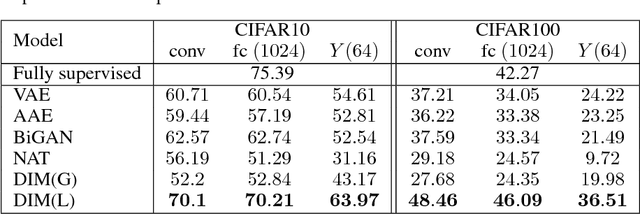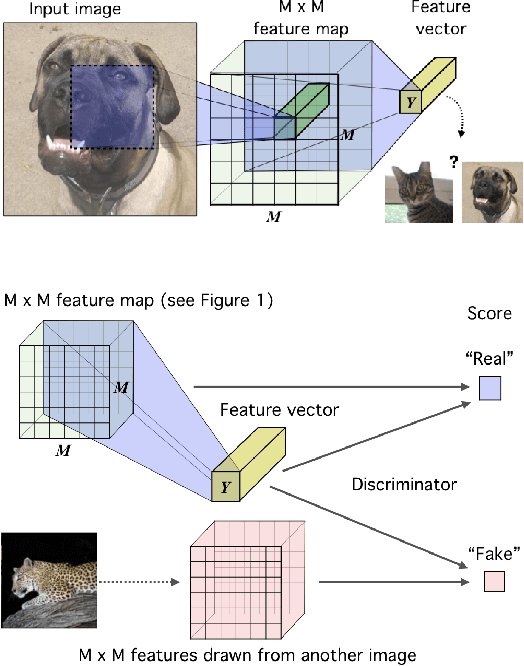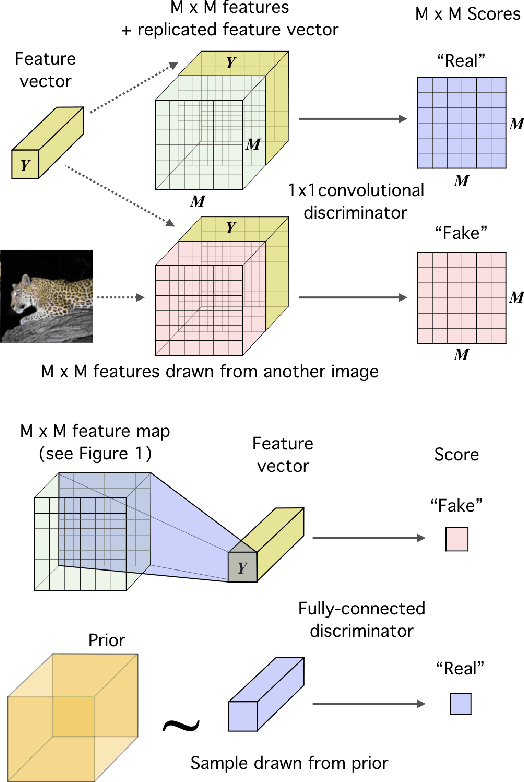Samuel Lavoie-Marchildon
Integrating Categorical Semantics into Unsupervised Domain Translation
Oct 03, 2020



Abstract:While unsupervised domain translation (UDT) has seen a lot of success recently, we argue that allowing its translation to be mediated via categorical semantic features could enable wider applicability. In particular, we argue that categorical semantics are important when translating between domains with multiple object categories possessing distinctive styles, or even between domains that are simply too different but still share high-level semantics. We propose a method to learn, in an unsupervised manner, categorical semantic features (such as object labels) that are invariant of the source and target domains. We show that conditioning the style of a unsupervised domain translation methods on the learned categorical semantics leads to a considerably better high-level features preservation on tasks such as MNIST$\leftrightarrow$SVHN and to a more realistic stylization on Sketches$\to$Reals.
Learning deep representations by mutual information estimation and maximization
Oct 03, 2018



Abstract:In this work, we perform unsupervised learning of representations by maximizing mutual information between an input and the output of a deep neural network encoder. Importantly, we show that structure matters: incorporating knowledge about locality of the input to the objective can greatly influence a representation's suitability for downstream tasks. We further control characteristics of the representation by matching to a prior distribution adversarially. Our method, which we call Deep InfoMax (DIM), outperforms a number of popular unsupervised learning methods and competes with fully-supervised learning on several classification tasks. DIM opens new avenues for unsupervised learning of representations and is an important step towards flexible formulations of representation-learning objectives for specific end-goals.
 Add to Chrome
Add to Chrome Add to Firefox
Add to Firefox Add to Edge
Add to Edge